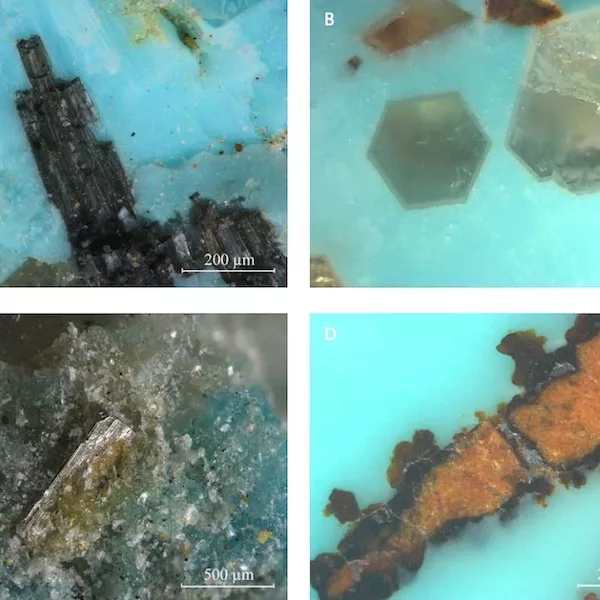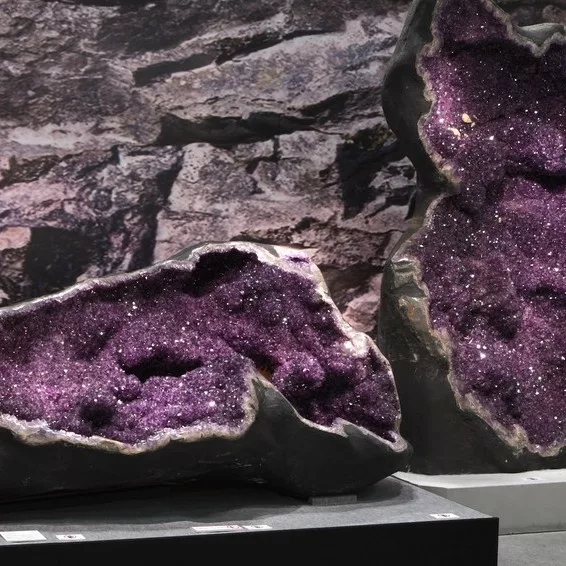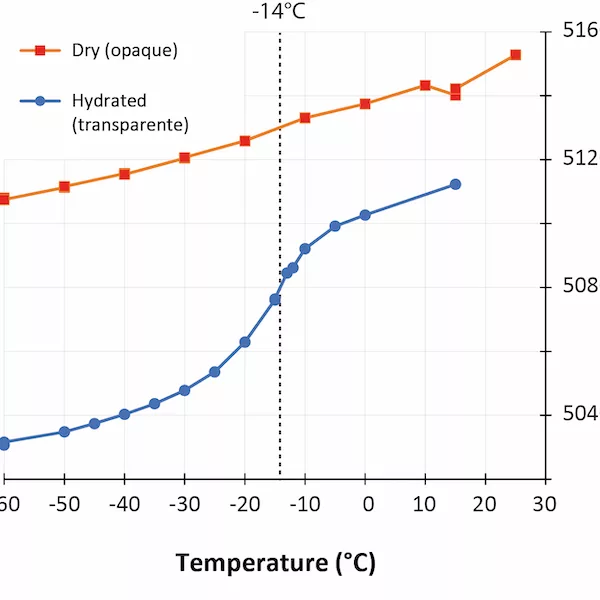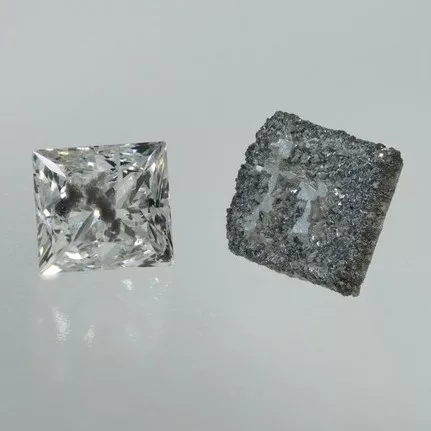Investigating the Provenance signature of Tourmaline-Bearing Turquoise in the Kuh Zar Gold Deposit, Semnan Province, Iran
Keywords: Baghu Turquoise, Kuh Zar Gold mine, Origin Determination, EPMA, LA ICP MS
The Neyshabur reserve in northeast Iran is renowned for its production of Persian turquoise, yet it is not the sole deposit associated with this valuable gemstone. The Kuh Zar mine, also known as Baghu (Figure 1-A), holds historical significance for its gold deposits (Momenzadeh et al., 2004) and features a cluster of at least four turquoise-bearing tunnels within close proximity. Situated in the Torud-Chahshirin magmatic arc of Semnan province, central Iran, the studied area encompasses a series of calc-alkaline extrusive igneous rocks intruded by granodioritic stocks and mafic dikes (Figure 1-B) (Niroomand et al., 2018). Notably, turquoise is found within fractures in the Baghu area, specifically within the rhyolites to granodiorites of the First and Ardakani tunnels that have undergone phyllic-argillic alteration (zone I) (Taghipour and Mackizadeh, 2014). Additionally, turquoise is present in the sericitized pyroclastic-volcanic rocks of the Movahed tunnel (zone II).
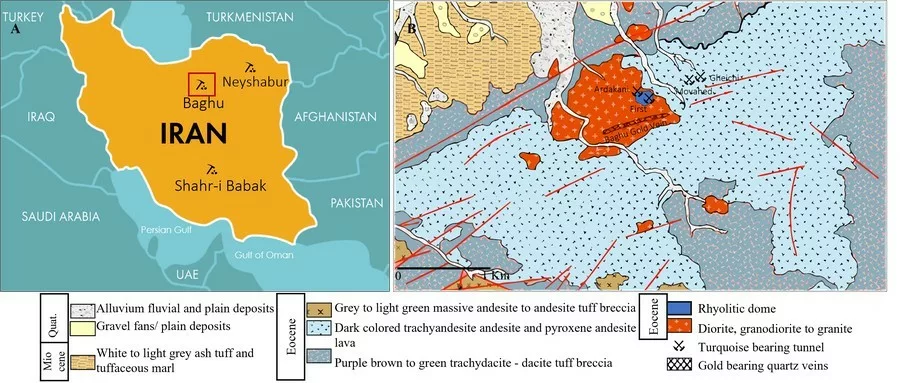
This article focuses on the collection of 49 turquoise samples directly from each zone. Microscopic examination reveals an association of zone I turquoise with tourmaline (Figure 2-A), quartz (Figure 2-B), and pyrite (Figure 2-C), whereas zone II turquoise is associated with iron oxides (Figure 2-D) and sericite, observed as veins, veinlets, and nodules. The Baghu turquoise exhibits a range of colors from pale light to vivid turquoise blue and dark olive-green, displaying faint to medium blue fluorescence under long UV light. In order to investigate the composition characteristics and rare earth element (REE) patterns of the samples, chemical analysis techniques including Electron Microprobe Analysis (EPMA) and Laser Ablation Inductively Coupled Plasma Mass Spectrometry (LA-ICP-MS) were employed.
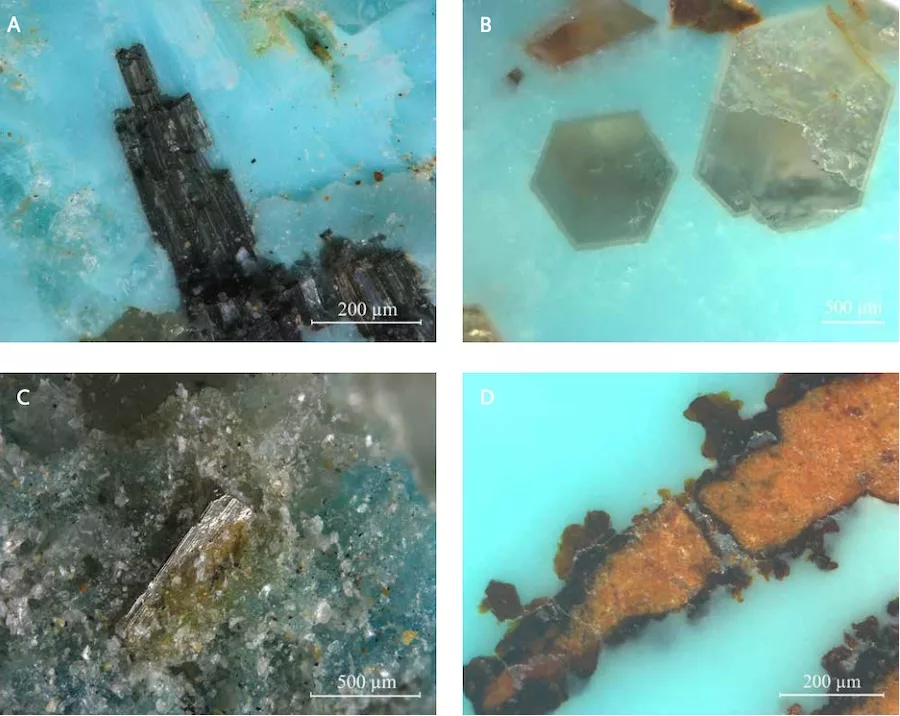
Based on the EPMA results for major elements, zone I turquoise show a higher average content of Fe and Si (Fe2 O3 = 3.04 wt%, SiO2 = 2.23 wt%) in comparison to zone II samples (Fe2 O3 = 2.18 wt%, SiO2 = 0.61 wt%). Conversely, the LA ICP MS data on trace elements revealed that zone II had a higher average concentration of Li, Be, and Sr (Li = 150 ppm, Be = 25 ppm, Sr = 505 ppm) than zone I (Li displaying faint to medium blue fluorescence under long UV light. In order to investigate the composition characteristics and rare earth element (REE) patterns of the samples, chemical analysis techniques including Electron Microprobe Analysis (EPMA) and Laser Ablation Inductively Coupled Plasma Mass Spectrometry (LA-ICP-MS) were employed. = 51ppm, Be = 17ppm, Sr = 224ppm). While both zones demonstrated a notable presence of Ba, zone I (Ba = 662 ppm) showcased a higher concentration than zone II (Ba = 350ppm), thereby serving as a strong marker for Baghu turquoise. These elemental anomalies could be partially attributed to alteration and imposition of zone I with the Oxidation zone of the gold mine.
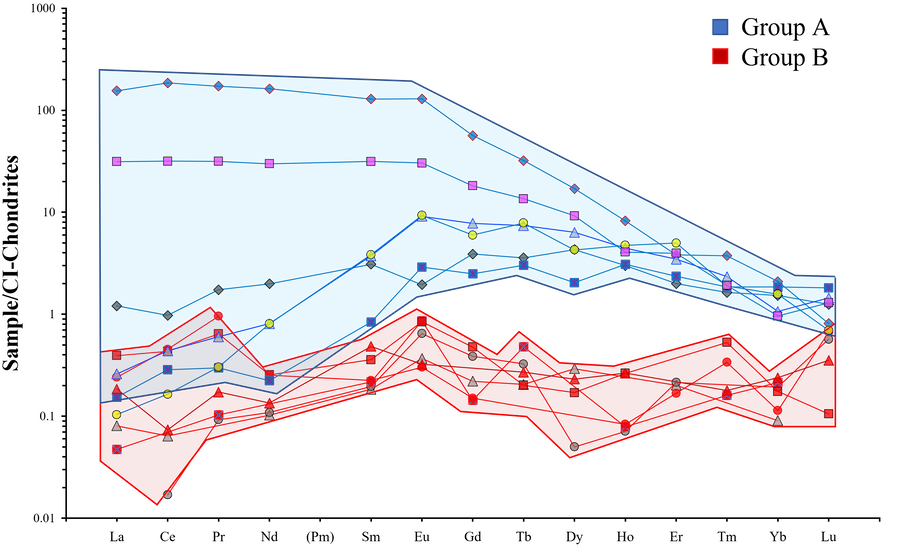
Despite the common use of Rare Earth Element (REE) patterns as a means of determining the origin of gemstones, Baghu turquoise deviates from this conventional pattern. Upon dividing the Chondrite-normalized REE patterns into two distinct groups, it was observed (Figure 3) that all samples with Andesite host rock from the Movahed tunnel in zone II were classified as belonging to group B, which had a noticeably lower concentration of Heavy Rare Earth Elements (HREE) in comparison to group A. However, it should be noted that other samples within group B could not be directly linked to zone II.
It is crucial to recognize that while trace element ratios and REE patterns provide general composition characteristics of a deposit, they should not be solely relied upon for accurate provenancing of turquoise. Turquoise samples within the same deposit can display variations in trace element composition and REE patterns, particularly across different zones. Therefore, consideration of primary gemmological tests, particularly inclusions, becomes essential for determining the origin of turquoise samples.
References:
- Momenzadeh, M., Hajisoltan, A., Momenzadeh, M., 2004. Metallic mineral resources of Iran, mined in ancient times, A brief review. In T. Stollner, R. Slotta, and A. Vatandoust, Eds., Persian Antiques Splendor (Mining Crafts and Archaeology in Ancient Iran). Deutsches Bergbau-Museum Bochum, Bochum, Germany, 8-21.
- Niroomand, S., Hassanzadeh, J., Tajeddin, H.I., Asadi, S., 2018. Hydrothermal evolution and isotope studies of the Baghu intrusion-related gold deposit, Semnan province, north central Iran. Ore Geol. Rev., 95, 1028-1048.
- Taghipour, B., Mackizadeh, M., 2014. The origin of the tourmaline-turquoise association hosted in hydrothermally altered rocks of the Kuh-Zar Cu-Au-turquoise deposit, Damghan, Iran. Neues Jahrb. Mineral. Abh. 272, 61-77.
- Emam Jomeh, A., Jahangiri, A., Moazen, M., 2021. Investigation of the role of fractional crystallization, crustal assimilation and magma mixing in turquoise hosted subvolcanic intrusion rocks in Damghan gold mine, South of Damghan, Iran. Iranian Journal of Crystallography and Mineralogy. 29, 385-402

